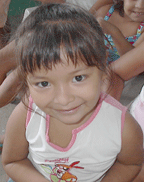

| HOME |
| THE CALL |
| MISSION TRIPS |
| SEINE BIGHT |
| PLACENCIA |
| CONTACT AND SUPPORT |
| TESTIMONY |
| ABOUT BELIZE |
| UPDATE |
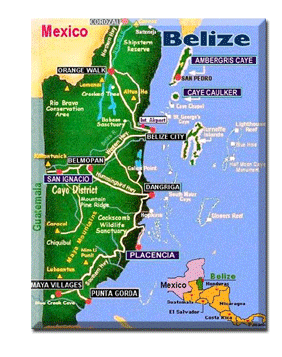
Map of Belize Central America |
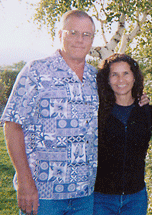
Jim and Anna Mensie |
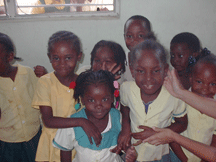
Kids in Seine Bight |
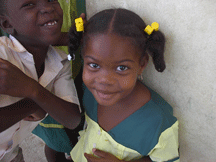
Another beautiful child!!!!!! |
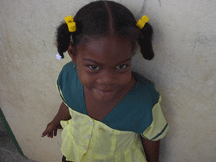
Ready to minister here? |
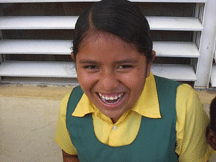
Lord give us your love for these people!! |
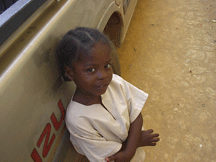
1st Corinthians 13 |
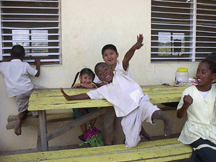
"Suffer not the little children to come unto me" |
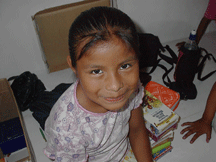
Jesus love the little children!!!! |
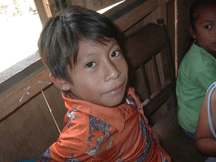
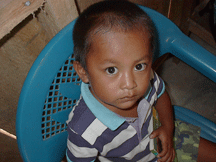
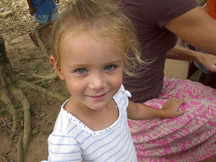
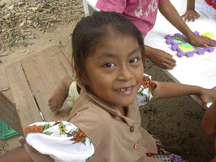
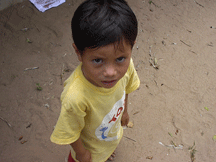
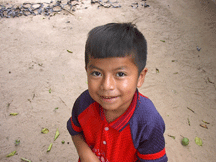
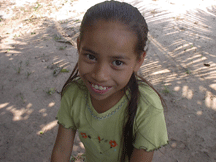
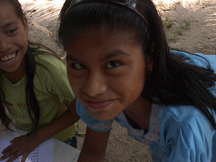
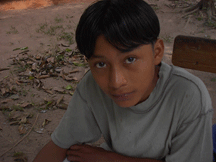

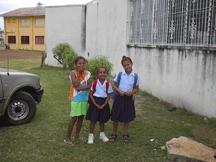

Belize is located in the Northern Hemisphere, within Central America.
Belize is bounded on the North by Mexico, South and West by Guatemala, and the beautiful Caribbean Sea washes its 174 mile coastline to the East.
Geographically we're located between 15° 52' 9" and 18° 29' 55" North Latitude, and 87° 28" and 89° 13' 67" West Longitude with an area of 8,866 sq. miles including 266 sq. miles of islands.
CULTURE
English remains the most common language spoken followed closely by Creole, but Spanish is becoming more widely spoken. The Garifuna, Mayas, and Mennonites each speak their own language. The Creoles are descendants of British settlers and African slaves and can be recognized more by their values and way of life rather than by biological manner. Two thirds of the Creole population reside in Belize City. Creole men, even after slavery, dominated positions in logging crews, and even now dominate civil service. The Garinagu came to Belize from the Bay Islands of Honduras on 19th November 1803. They are the result of the intermingling of African slaves, Carib and Arawak Indians. The Garinagu dominate the southern towns of Punta Gorda and Dangriga as well as the villages of Seine Bight, Hopkins, Georgetown, and Barranco. Some Garinagu also reside in Belize City and Belmopan. Fishing and agriculture is a traditional way of living for the Garifuna. Rituals and traditions are still being retained as the Garinagu strive to maintain a place in Belizean society. November 19th is a national holiday in Belize to commemorate the arrival of the Garifuna to Belize.
The Yucatec originated from Yucatan Peninsula in Mexico and came to Belize in the mid-nineteenth century running from the Guerra de Castes (Caste War). They now reside in the Corozal, Orange Walk, and Cayo Districts. Today the Yucatec Maya have exchanged their spoken language for English and Spanish. The Mopan Maya, who were fleeing taxation and forced labor, came to Belize in 1886 from the Peten region of Guatemala. Settlements can be found in San Antonio Village in Toledo District and other villages in the Cayo District. Kekchi Maya came to Belize in 1870's, running from enslavement by the German coffee growers in Verapaz, Guatemala. They settled in the lowland areas along rivers and streams, forming small isolated villages throughout Toledo. Because of their isolation, the Kekchi have become the most self reliant ethnic group in Belize. They are also peaceful people known for their cooperative practices in farming and cultural development. ANCIENT MAYA Belize was the home of the earliest Maya settlements as proven by glyph translations and diggings. In the Orange Walk District, Archaeologists have found evidence that trace Mayan communities as far back as 2000 BC Mayans considered themselves, and still do, as products of the ceiba tree. This tree is, said to be in the center of the universe, holds up the heaven and is a symbol of life. The fact that the Maya have contributed the concept of the zero among other things, tells that they had an advanced civilization. Yet it is somewhat a mystery why such a civilization disintegrated.
East Indians make up about 2% of the population and first began to arrive in Belize after Emancipation in 1838. Initially coming in as indentured, many of them stayed on to work the sugar plantations and were joined by other East Indian immigrants. East Indians are spread out over many villages and towns primarily in the Corozal and Toledo districts and are fairly well integrated into the Belizean population.
The Chinese population in Belize first began to arrive here to escape the Japanese invasion of China just before World War II. Moving around the Central American republics, many of them settled in Belize. More recently, many Taiwanese made their homes and established businesses in Belize as part of the economic citizenship program that was being offered by the Belizean government.
The Mennonites began arriving in Belize in 1958 from Manitoba, Canada, Chihuahua, and Mexico. They reside in the Orange Walk and Cayo District in six main communities : Blue Creek, Shipyard, Little Belize, Progresso, Spanish Lookout and Barton Creek. Mennonites are easily identified by their apparels, the women who wear bonnets and long dresses and the men with denim overalls and hats. The Mennonites have made it a point to have their own school, church, and financial institution in their community. They are well grounded in agriculture, as most Belizeans benefit from the sale of their poultry products throughout the country. Furniture crafted by the Mennonites has also been placed on the Belizean market. Throughout the country they are recognized as a group of hard working people.
|
A Brief History of Belize
A brief history of Belize can be divided in major four periods. Following is a very brief synopsis of these periods. You can view a complete timeline of Belizean History.
Archaeologists estimate that at their peak, 1 to 2 million Mayans lived within the borders of present day Belize. Mighty Maya cities such as Caracol, Xunantunich and Lamanai dotted the landscape, with small agricultural communities farming the land between. The Maya civilization is divided into the Pre-Classic (1000 BC to AD 300), the Classic (AD 300 to 900) when the civilization reached its height of development, and the Post-Classic (AD 1000 to 1500) when the civilization fell apart and disappeared.
No one knows for certain what caused the disappearance of the Maya. Perhaps it was war, loss of faith, famine, or a series of natural disasters.
Christopher Columbus sailed along the coast of Central America in 1502, and named the Bay of Honduras which borders the southern part of the barrier reef.
The first settlers in Belize were English Puritans, setting up trading posts along the coast of Belize. Various bands of ship-wrecked sailors, buccaneers, and pirates established permanent bases in Belize, harassing the Spanish galleons carrying gold, silver, and hardwoods from Central America to Europe. It wasn't long before logging became the dominant occupation.
This band of rugged individuals took to calling themselves "Baymen" after the Bay of Honduras. Spain continually attempted to expel these British buccaneers from then Spanish territory, but finally signed treaties in 1763 and 1786 allowing the British to continue to harvest timber in exchange for protection against pirates preying on the Spanish galleons.
During the 1840's, Great Britain declared Belize to be the colony of British Honduras. Development of Belize became more organized and multiethnic through a series of cultural changes. The European settlers began to marry freed slaves forming the Creole majority that still is dominant in the population. Mexican citizens began cultivating small farms in Northern Belize.
In Southern Belize, the Kekchi and Mopan Maya sought refuge in the hills of the Maya Mountains. A small band of Confederate Civil War veterans settled in what is now Punta Gorda. And from the Bay Islands of Honduras, the Garifuna people migrated and settled along the coast of Belize.
By the early 1900's, Belize had grown to nearly 40,000 inhabitants. But a destructive 1931 hurricane destroyed Belize City and by the 1930's, the economy was so poor that the residents began to call for independence. By 1954 voting rights were extended to all adults, and by 1961, England agreed to begin the process of setting Belize free.
In 1973, the colony's name was changed from British Honduras to Belize and on September 21, 1981, Belize's Independence was declared.
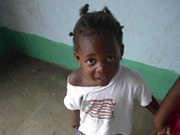 Belize is a country of various cultures, languages, and ethnic groups. Approximately 270,000 people in Belize consist of Creole, Garifuna, Mestizo, Spanish, Maya, English, Mennonite, Lebanese, Chinese, and East Indian. Due to racial harmony and religious tolerance, all of these different elements have mixed and blended successfully, and Belize has gained a widespread reputation for its friendly peoples.
Belize is a country of various cultures, languages, and ethnic groups. Approximately 270,000 people in Belize consist of Creole, Garifuna, Mestizo, Spanish, Maya, English, Mennonite, Lebanese, Chinese, and East Indian. Due to racial harmony and religious tolerance, all of these different elements have mixed and blended successfully, and Belize has gained a widespread reputation for its friendly peoples. 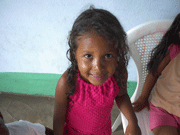 One of the most prominent ethnic groups are the Creoles, which formed 30% of the population in 2001. Creoles are descendants of the intermingling of the early British settlers with African slaves. More than 40% of the population is Mestizo. They are descendants of mixed blood Mexicans and Yucatec Mayans who fled from the Yucatan in the mid 1800's. Another 6.6% of Belize's population are the Garifuna. The Garifuna have their own language and culture. The Yucatec, Mopan, and Kekchi are three Amerindian groups which also make up Belize's population. The Chinese, with a population of 6,000 have made distinct communities, as well as the East Indians and the Mennonites.
One of the most prominent ethnic groups are the Creoles, which formed 30% of the population in 2001. Creoles are descendants of the intermingling of the early British settlers with African slaves. More than 40% of the population is Mestizo. They are descendants of mixed blood Mexicans and Yucatec Mayans who fled from the Yucatan in the mid 1800's. Another 6.6% of Belize's population are the Garifuna. The Garifuna have their own language and culture. The Yucatec, Mopan, and Kekchi are three Amerindian groups which also make up Belize's population. The Chinese, with a population of 6,000 have made distinct communities, as well as the East Indians and the Mennonites. 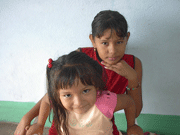

 There are three Maya groups present in Belize, namely the Yucatec, Mopan, and Kekchi Maya.
There are three Maya groups present in Belize, namely the Yucatec, Mopan, and Kekchi Maya. 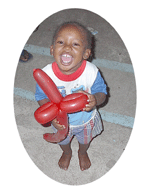
 The Mestizos are people of mixed Spanish and Mayan descent representing roughly 48% of the Belizean population. Originally arriving in Belize in 1840 to escape La Guerra de Castas in Yucatan they were joined by others fleeing an oppressive regime in the Peten. The Mestizos are found everywhere in Belize but most make their homes in the northern regions of Corozal and Orange walk and in the western district of Cayo. The Mestizos are an integral part of the Belizean community and have been instrumental in the growth and progress of the county.
The Mestizos are people of mixed Spanish and Mayan descent representing roughly 48% of the Belizean population. Originally arriving in Belize in 1840 to escape La Guerra de Castas in Yucatan they were joined by others fleeing an oppressive regime in the Peten. The Mestizos are found everywhere in Belize but most make their homes in the northern regions of Corozal and Orange walk and in the western district of Cayo. The Mestizos are an integral part of the Belizean community and have been instrumental in the growth and progress of the county. 